- Home
- Peter Matthiessen
Sand Rivers
Sand Rivers Read online
This book made available by the Internet Archive.
For Eck and Donnie Ecldiart and For John Owen
ACKNOWLEDGMENTS
Especially I wish to thank Tom Arnold MP and David Paterson for inviting me to join the Selous expedition, and Brian Nicholson, who put aside a healthy mistrust of writers in order to share his unique store of information and experience. All members of the expedition, African as well as European, made invaluable contributions that are identified within the text, and in addition, Hugo van Lawick made many helpful comments on the first draft of the manuscript.
Dr. Alan Rodgers of the University of Dar-es-Salaam provided a considerable amount of important information on the ecology of the Selous, and Drs. Iain Douglas-Hamilton, John S. Owen, George B. Schaller, Thomas Struhsaker, and David Western were all helpful on critical points.
PM.
SAND RIVERS
^- .▼.
^ •'?•
Sfilt-IF
I
Between two thoughts, in the month of August 1979,1 discovered myself with mild surprise on the evening flight from London south to Dar-es-Salaam, in Tanzania: how often 1 had made this journey which in an airplane, at night especially, seemed as mysterious as a rite of passage. Imperceptibly during that night, in the silver time capsule of the long flight between continents, crossing the moon shadows of the Old World, imagining the wine-dark sea, the silent pyramids, the vast desert like a last barrier to the unknown, there came the sense that always comes on the way out to Africa, that the past had been left behind, that one was returning into the present, that one might emerge from this winged chrysalis with a new eye. And in a clear dawn of the next day, as the sun was born again from the Indian Ocean, lighting the dun thornbush and stone rivers of Kenya's Northern Frontier District, far below, a silence arose like memory from the turning earth and with it a promise and elation that 1 had rarely felt since childhood's morning.
The shining wing crossed the Equator at Mount Kenya, passing over into Tanzania as Kilimanjaro and Mount Meru rose like black islands from a sea of clouds. Tomorrow or the next day I would leave on a month's safari into the Selous Game Reserve, in southeastern Tanzania, said to be the greatest stronghold of large wild animals left on earth. Its area of 22,000 square miles makes it larger than Wales or Maryland; more to the point, it is the largest wildlife sanctuary on the continent,^ almost three times as large as Kenya's huge Tsavo East and Tsavo West
PETER MATTHIESSEN
combined, almost four times as large as the great Serengeti National Park, in Tanzania. Yet of all the great parks and game reserves in East Africa, it remams the least accessible and the least known.
This "last safari into the last wilderness", as its sponsor, a young British Member of Parliament, described it, was to be led by a man 1 did not know, who had served as a warden of the Selous for more than twenty years and knew it better than anyone alive. If all went well, the safari would proceed to a remote point at the confluence of two great rivers in the far south of the Selous, where this man and 1 would cross the rivers and penetrate as far as possible on foot.
At the Dar-es-Salaam airport 1 was met by my friend Maria Eckhart, who was born at Moshi, at the foot of Kilimanjaro; she had left the United States two weeks ahead of me to visit her family at Njombe, in the Nyasa Highlands. Throughout the country, Maria told me, the economic situation was visibly more desperate than it had been when we were here in 1977. As we drove into the city it seemed to me that a look of apathy and discouragement was now apparent in the people's faces that had not been there two years ago, when there was even less in the shop windows. Because it was Sunday, when private driving is not permitted (no gasoline may be sold between Thursday evening and Monday morning), an emptiness wandered like blown litter through the town.
Besides the oil crisis, which has been especially harmful to poor countries, Tanzania was suffering from a year of failed crops and the attrition of its eight-month war to depose Field Marshal Idi Amin Dada of Uganda. According to a Maasai woman Maria had talked with at the airport, the people believed that Amin was now in the Sudan with three thousand of his troops, which was why so many Tanzanian soldiers had to stay on in Uganda; in any case, the country's foreign reserves were entirely depleted, and there was no money left to pay the troops. Many of those still in Uganda had taken up where Amin's soldiers had left off in the looting and exploiting of the local people; they completed the butchery, begun by the fleeing Ugandans, of the wild animals in the great Ruwenzori and Kabalega Falls National Parks.^ Just three days earlier, a young wildlife biologist arriving in Nairobi reported^ that Ugandans fleeing through the parks the previous March had killed a few hundred animals for food, but that the Tanzanians, who had also killed for food when they first turned up in the parks in April, had soon begun killing for profit, selling meat and skins as well as ivory. According to his "minimal estimate" more than six thousand hippo, five thousand antelope, and two thousand buffalo had already been slaughtered, mostly by machine gun fire and often from the backs of speeding trucks. Seventy lion and presumably many other creatures had also been killed; in his opinion the Ruwenzori National Park would be "dead in three weeks or less". The other Ugandan parks, beset by poachers since 1973, had fared no better."^ Meanwhile, Kenya was struggling to recover from the epidemic poaching
SAND RIVERS
of the 1970s, which had threatened the existence of such splendid species as the black rhinoceros, reticulated giraffe, and Grevy zebra. In the light of all this sickening news, and of the chronic political instability that clouds the future of Africa, "the last safari into the last wilderness" did not seem such a fanciful description after all.
Tom Arnold, a pale-haired, friendly Englishman whom we met for the first time that evening, is a theatrical producer and politician; at thirty-two he was one of the youngest Members of Parliament, and had recently been appointed Parliamentary Private Secretary to the Secretary of State for Northern Ireland. Sometimes he came to Africa on official business, but more often he made the journey for its own sake. "On my first visit," he told us over a drink in the bar of the hotel, "I was enchanted by Africa; that's the only word." In the previous few years he had made seven trips, and these days he spent as much of his free time here as possible, usually in the company of the former warden of the Selous.
The enchantment had set in during the winter of 1976, when Arnold took the standard tour of the southern Kefiya-northern Tanzania game parks, then extended his trip to include a flying visit to the Kenya coast and to the northern game park called Samburu. The charter pilot who flew him to Samburu was a man named Brian Nicholson, who turned up there again the following day. "You think this is impressive, do you?" he said to Arnold, and went on to describe the Selous Game Reserve, a little-known wilderness in southeastern Tanzania where he had served as game warden for many years. "I couldn't believe a place like that could still exist," Arnold said. "Like most people I had never heard of it, and I wanted to see it for myself." That same year, Arnold made four trips out to Africa, and on the last of these, in early autumn, he hired Nicholson to fly him down to the Selous. The former warden was upset by what he saw as the utter abandonment of the system of dry-season tracks, air strips, and patrol posts that he had established there between 1950 and 1973, but what Arnold saw was what Nicholson had promised, the largest and wildest game sanctuary in all East Africa. "There was an enigma about it, a mystery - that vast wild place that scarcely anyone knew."
Before long, Arnold had hit upon his idea of an ultimate safari. As he discovered when he sought to inform himself about the place, almost nothing had been written about the Selous: because it was not a park but a game reserve, with no facilities for visitors, this remote and inaccessible region had been all
but ignored in the great pilgrimage to the wildlife of East Africa that had seized the imagination of the Western world in the 1960s and 1970s. Baron Hugo van Lawick and myself were asked to do the book that would help to underwrite his expedition, a book about a Selous safari led by the man who knew it best, and a number of others were invited as guests, including Maria Eckhart, the Nicholson family, and David Paterson, a young Hong Kong businessman who would later join
PETER MATTHIESSEN
Tom Arnold as an expedition sponsor. Meanwhile, Nicholson had contacted a fellow pilot named Richard Bonham, who was a director of Nomad Safaris operating from Mombasa, a new company that avoided the usual tourist routes in favor of real expeditions, mostly to the Northern Frontier District and the Tana River. Kenya safari companies were no longer allowed to operate in Tanzania, on account of the bitterness which in 1977 had led to the closing of the border; but since, in the absence of supplies, no Tanzania company was equipped to handle the caravanserai that Arnold had in mind, Nicholson persuaded friends in the Tanzanian government to waive the rule, with the good argument that international publicity for the Selous might help to save it. By mid-August the Nomad caravan - a truck and several Land Rovers - had crossed the border, and even now was headed south toward our first base camp in the Selous, accompanied by Hugo van Lawick, who was bringing his own Land Rover from the Serengeti.
Even with cooperation, things had not gone smoothly. In recent months, Bonham had had to make several trips to Dar-es-Salaam to confirm frontier clearances and permits, and on the last of these, in early August, he was detained at the airport for ten hours because officials there had mislaid his permit to fly into the country. That afternoon Tom Arnold and the Nicholsons, arriving from Nairobi by charter plane, were refused permission to enter the country for three hours. Tom Arnold told us that he had taken the precaution of escorting Nicholson out of the Immigration Office. "He takes this sort of thing very badly," Arnold said. "Remembers how things used to be, you know." He laughed loudly in amusement and affection. Finally the British High Commissioner's assistant, called out on a Sunday, came to the airport and discovered the necessary clearance among the papers on the official's desk.
A tall, thin man with a closed face appeared, leading his women. Arnold stood up to introduce us to Brian Nicholson. Somehow I had come by the notion that this legendary warden was "a bit difficult" - that is, grumpy and suspicious of "outsiders", and writers especially. In any case, we were wary of each other, and because neither of us have much taste for small talk, the working relationship that was crucial to the success of the safari started out with an interminable pause. Finally I asked Nicholson why he thought the immigration official at the airport had behaved so arbitrarily when the clearance was sitting right there on his desk. "Right hand doesn't know what the left hand is doing," said the Warden shortly. Was it possible that this was "official" harassment of visitors from Nairobi, due to the bad feeling between Kenya and Tanzania? "They're not that efficient," Nicholson said.
Unlike his wife, Melva, and his pretty daughter Sandra, who were very friendly from the start and tried to ease things, Nicholson seemed cross, stiff, and uneasy, and scarcely ever looked me in the face that whole first evening. In profile, which I had ample opportunity to study,
SAND RIVERS
the Warden was rather a handsome man, much younger than I had expected, with weather hnes and good, high color and taffy-colored hair in a military cut, shaved high at the back and well above the ears. Head on, however, his down-drawn face appeared slightly askew. It wasn't, of course; the imbalance lay in his expression. His full lower lip had a slight twist, sardonic, faintly truculent, and a bald cast to his pale blue eyes gave an air of coldness that his brusque manner did little to offset.
At supper, overlooking the night harbor, Maria and Tom managed to draw the Warden out. Maria soon discovered that Brian, who was forty-nine, had attended the Prince of Wales School in Nairobi (known as the "Cabbage Patch", she reminded him, due to the "smelly boys", who referred to her own Kenya High School for Girls as the "heifer boma", or young cow pen). One of his schoolmates there Was Bill Woodley, perhaps the best known of all East African game wardens, who has remained a lifelong friend, and another was Maria's older brother, Peter Eckhart, known to his fellow scholars in those grand old colonial days as Njoroge or "Nigger" because of his black curly hair. "Oh yes, he was in the form behind me, a little red-faced boy," Nichojj^on recalled, reflecting mildly after a moment, "I probably made him cry." Maria stared at him, startled. "You probably did!" she exclaimed at last. "Oh, I know his type," she told me later. "Typical East African redneck, a real Boer!" But like myself, she sensed already that Brian Nicholson was a good deal more complex than the anachronism he seemed to wish to represent. He was very much his own man, but aggressively so, emphasizing his own self-sufficiency, not always obliquely, in almost everything he said.
"That gentleman we were talking to -" Tom Arnold was saying, and Nicholson said in honest puzzlement, "What gentleman? Oh! you mean the African."
The disparity between these two was disconcerting. Tom Arnold had an aristocratic manner to go with his obvious intelligence and education, and he was as politic and well-spoken as the other was abrupt; he was prone to big laughter rather than guarded, as well-fleshed and fond of wine as Brian Nicholson was lean and abstemious, and as plainly a man of the indoors as his new friend was ruddied by the sun. Consciously or not, Brian Nicholson was playing the role of the crusty old-style bush type who had been described to me, and that first evening, the month ahead seemed a very long time indeed.
For all his stiffness, Nicholson was at pains to be obliging, and presently suggested that I come up to his room after supper to have a look at his maps of the Selous. Apparently, he had made a decision to cooperate in Tom Arnold's safari and to work with this bloody American writer, whatever the cost. I noticed quickly that the going was a lot easier when we were away from other people, but at the end of the first evening I still did not know if his closed expression derived from a fundamental suspicion of all writers or merely a simple aversion to myself. Tom
PETER MATTHIESSEN
Arnold had previously mentioned to me that Nicholson had read a book I had written on East Africa: "Seems to know something about Africa," he had muttered, in what Tom diplomatically assured me was high praise. Yet his apparent views on race and politics did not seem to accord with those expressed in The Tree Where Man Was Born. On our way out to the University of Dar-es-Salaam the following day to talk with one of Nicholson's old colleagues, an expert on the ecology of the Selous, he did not hide his disapproval of the way that Africans were managing here in the city; of the epidemic idleness and inefficiency, brought about, in his opinion, by a "system that maintained people in jobs because they were black, not because they were qualified"; of the weeds and chickens in what had been the gardens of his house out at Oyster Bay; of the chronic failures of the telephone, electricity, and even hot water for his tea in what was supposed to be the best hotel in Tanzania (the news that the cash register had broken down made him laugh, the first laugh that he ever emitted in my presence, and not a heart-warming sound in any way). I decided not to ask him his opinion of the notices the hotel had posted in the rooms, under the heading useful hints, which cautioned the traveler to avoid the waterfront and harbor area, especially after dark, and made the following suggestions:
Be wary about "hard-luck" stories from tricksters hanging around, with their smooth talk and friendly persuasion. If at all a taxi is required, use one from a reputable firm. Ornaments are very tempting for local snatchers.
For those who knew which of the motley taxis might represent a reputable firm, such hints were useful, unlike the notice seen by Hugo van Lawick, posted by the local commissioner next to the telephone in the Kigoma airport: "It has come to my attention that use of this telephone is absolutely disgusting."
On 21 August we flew inland over the cloud shadows and small settlements of the coastal
bush, entering the northeast corner of the Selous at a point not more than seventy miles southwest of the capital. The plain beneath had been turned hard black by recent burning, and I asked Brian, seated in front next to the pilot, Godfrey Mwela, if he thought the fires had been set by Game Department people to generate new growth. He shook his head. "Poachers, I should think. Always had a problem with them in the north because here the villages come up so close to the boundaries. I've seen snares strung through here for almost fifteen miles, and dead animals rotting all along the way."
Off to the west rose the hills of the central African plateau, and soon the plane was crossing the new swamps created between 1971 and 1974 by the Rufiji River, which had left its ancient course as sandbanks built up in the main channel and overflowed onto this eastward plain below Stiegler's Gorge. It was now mid-afternoon, and large groups of elephant and buffalo were moving peacefully toward the shining water. Headless palms turned like strange sentinels under the shadow of the plane; most of the trees had been killed by the villagers, who lop off the crowns, then convert the rising sap into "palm wine". Here and there stood the delicate tall stalk of a giraffe, the first and last giraffe we were to see in the Selous.
For reasons not well understood, the giraffe of eastern Tanzania does not occur south of the Rufiji although the same species reappears beyond the Zambezi River, more than six hundred miles further south; and the
9 1
PETER MATTHIESSEN
white-bearded gnu is replaced below the Rufiji by a distinct morphological race, the Nyasa wildebeest, which lacks the white beard but has a striking white chevron on the forehead. It has been suggested' that the course of the Rufiji represents an ancient fault line, connected to the Rift, that was once too deep and dangerous to cross and served as a true geographical barrier which permitted the separation of the wildebeest into two subspecies. But this theory of the "Rufiji barrier" does not explain why the giraffe and a number of smaller creatures have failed to extend their range now that those hypothetical deep canyons have silted in, nor why the two races of wildebeest should remain distinct, with no trace of intermediate forms, when all that separates them for half the year are broad sand bars and the shallow channel of a river that waterbuck as well as elephant and buffalo cross without difficulty.

 Lost Man's River: Shadow Country Trilogy
Lost Man's River: Shadow Country Trilogy The Tree Where Man Was Born
The Tree Where Man Was Born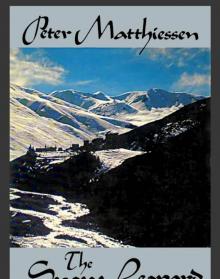 The Snow leopard
The Snow leopard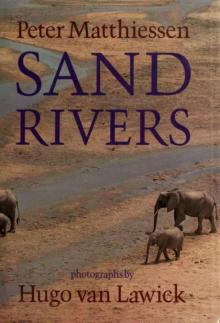 Sand Rivers
Sand Rivers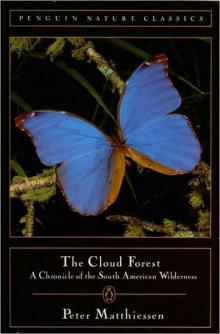 The Cloud Forest
The Cloud Forest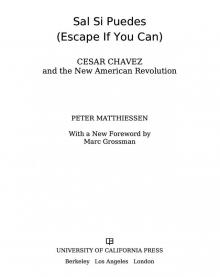 Sal Si Puedes (Escape if You Can)
Sal Si Puedes (Escape if You Can)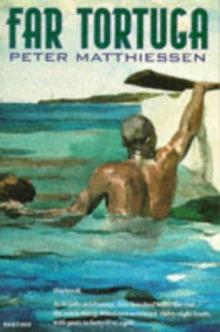 Far Tortuga
Far Tortuga Men's Lives
Men's Lives On the River Styx: And Other Stories
On the River Styx: And Other Stories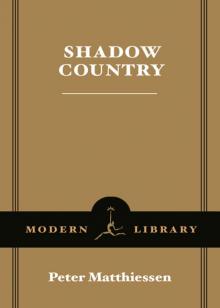 Shadow Country
Shadow Country At Play in the Fields of the Lord
At Play in the Fields of the Lord Lost Man's River
Lost Man's River Killing Mister Watson
Killing Mister Watson On the River Styx
On the River Styx